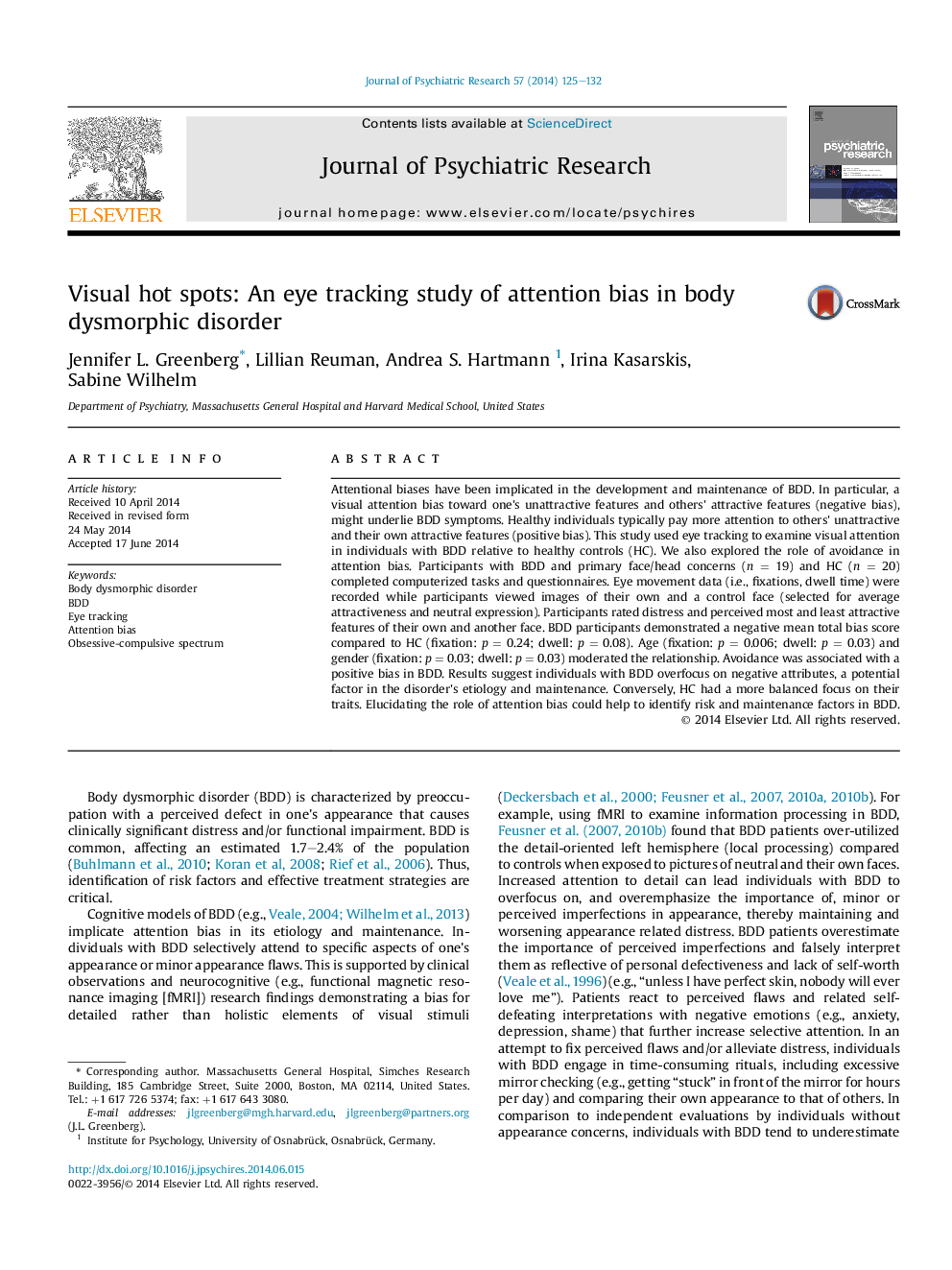| کد مقاله | کد نشریه | سال انتشار | مقاله انگلیسی | نسخه تمام متن |
|---|---|---|---|---|
| 326965 | 542674 | 2014 | 8 صفحه PDF | دانلود رایگان |
• Examined visual attention bias in subjects with BDD (n = 19) and controls (n = 20) using eye tracking.
• Explored the role of avoidance in attention bias.
• BDD participants demonstrated a negative attention bias compared to HC who focus their attention more broadly.
Attentional biases have been implicated in the development and maintenance of BDD. In particular, a visual attention bias toward one's unattractive features and others' attractive features (negative bias), might underlie BDD symptoms. Healthy individuals typically pay more attention to others' unattractive and their own attractive features (positive bias). This study used eye tracking to examine visual attention in individuals with BDD relative to healthy controls (HC). We also explored the role of avoidance in attention bias. Participants with BDD and primary face/head concerns (n = 19) and HC (n = 20) completed computerized tasks and questionnaires. Eye movement data (i.e., fixations, dwell time) were recorded while participants viewed images of their own and a control face (selected for average attractiveness and neutral expression). Participants rated distress and perceived most and least attractive features of their own and another face. BDD participants demonstrated a negative mean total bias score compared to HC (fixation: p = 0.24; dwell: p = 0.08). Age (fixation: p = 0.006; dwell: p = 0.03) and gender (fixation: p = 0.03; dwell: p = 0.03) moderated the relationship. Avoidance was associated with a positive bias in BDD. Results suggest individuals with BDD overfocus on negative attributes, a potential factor in the disorder's etiology and maintenance. Conversely, HC had a more balanced focus on their traits. Elucidating the role of attention bias could help to identify risk and maintenance factors in BDD.
Journal: Journal of Psychiatric Research - Volume 57, October 2014, Pages 125–132
